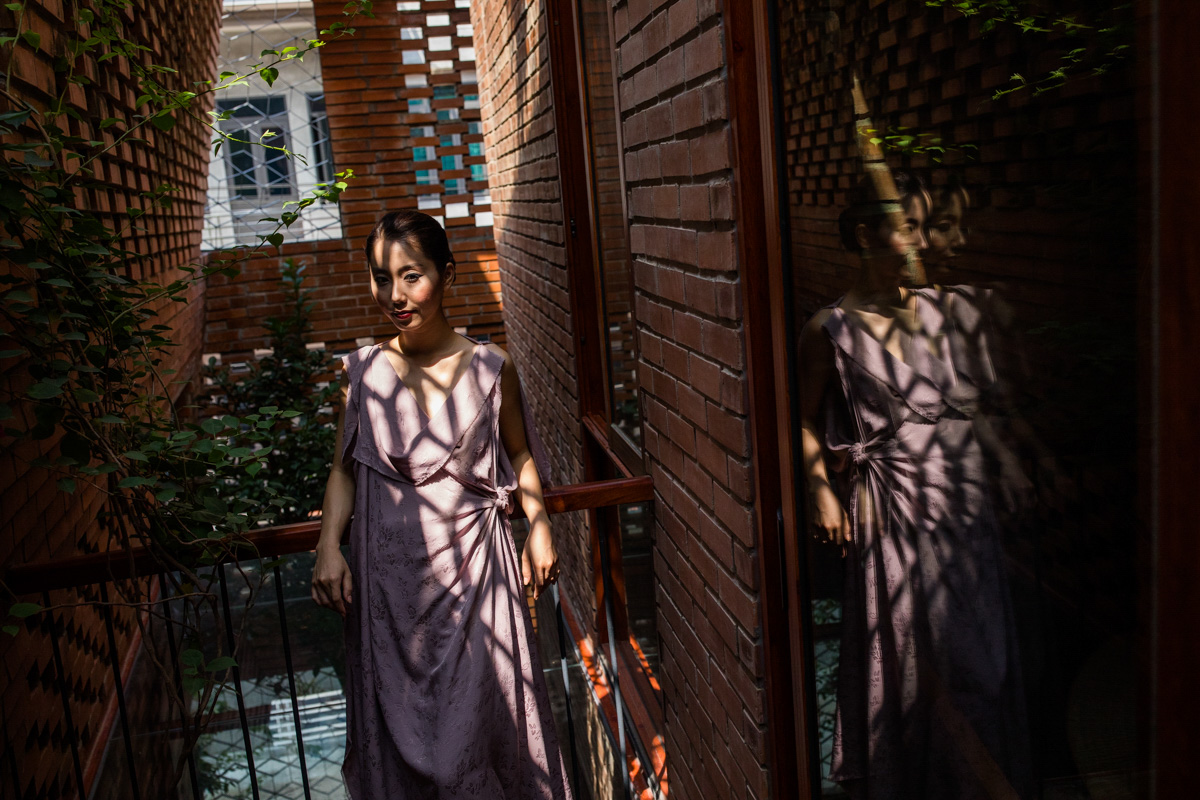
Its presence is subtle, materialising in modern architecture and structural renovations, through vibrant artworks in market stalls, down alleyways and on walls and windows, and through the design diversity of textiles and clothing. With this visual shift in the country, the arts and fashion industries are attracting a new wave of creative thinkers and fashion designers.
RMIT Vietnam has taken the lead on feeding this blossoming culture, with the School of Communication & Design initiating innovative discussions with local and international industry experts, organising fashion events, and engaging and collaborating with the arts community to continue to push the boundaries of design.
RMIT’s latest collaborative project Nexus > fashion:architecture:style:place focuses on connecting a range of creative processes to explore the design aesthetic of Vietnam’s urban environment. Creative input from a range of industry professionals including contributions from architecture, fashion design, modelling, photography and education helped inspire the 1960s-meets-modern-day-Saigon theme, that brings together fashion and architecture in one dynamic photographic series.
 This image from the research project Nexus was taken under the creative direction of Associate Professor Graham Christ and Professor Julia Gaimster, and shows a model in the building, Brick Cave Hanoi (2016) designed by H & P Architects wearing clothing by designer Vu Ta Linh.
This image from the research project Nexus was taken under the creative direction of Associate Professor Graham Christ and Professor Julia Gaimster, and shows a model in the building, Brick Cave Hanoi (2016) designed by H & P Architects wearing clothing by designer Vu Ta Linh.
RMIT Head of the School of Communication & Design Professor Rick Bennett said the Nexus project is about celebrating emerging talent in Vietnam and acknowledging the changing architectural vernacular.
“We live in an increasingly interconnected and complex society. Boundaries are constantly blurring and stakeholder needs are ever-changing. The Nexus project reflects the creative landscape in which we currently operate. It represents the notion of intersections across all creative disciplines. It demonstrates our desire and need to connect with many ideas, things, places and people, and their radically different working practices across new cultural and creative industries,” Professor Bennett said.
“Vietnam vogue is emerging and growing stronger every day. This project shows how design, culture, fashion, communication and urban environments are merging together and borrowing ideas from each other to further this country’s unique and cool identity,” he said.
Head of Design at RMIT Vietnam’s School of Communication & Design Professor Julia Gaimster described Saigon as the “cool place to be”.
“Fashion is leading the young and cool. The conversation is changing. Vietnam is changing. Vietnam is shifting away from the country where people make things, to the country where people create things,” Professor Gaimster said.
But she warned that while Vietnam was currently enjoying a strong economy largely due to the flood of foreign investment into clothing and textiles, there was a risk that the country could follow China’s shrinking manufacturing industry once labour costs in Vietnam increased.
“We want to help build the fashion design brand of Vietnam. Vietnam will not remain a manufacturing centre forever and if it doesn’t have its own labels, infrastructure, fashion identity and its own designers that it can promote on a global platform, it won’t survive. The industry will die,” Professor Gaimster warned.
“What happens in the fashion industry is that manufacturing moves out of a country as soon as it becomes expensive. That’s what adds to the importance of this project; it’s reaching out to young designers and giving them a platform to grow from.”
 This image from the research project Nexus was taken at Lib House Ho Chi Minh City (2015) that was designed by Ateiler Tho.A Architects, and shows clothing by designer Khoa Lo Folklore Design.
This image from the research project Nexus was taken at Lib House Ho Chi Minh City (2015) that was designed by Ateiler Tho.A Architects, and shows clothing by designer Khoa Lo Folklore Design.
The Nexus project is part of a larger exhibition of works – Nexus 2018 Creative Showcase – currently on display at RMIT Vietnam in Ho Chi Minh City. Sponsored by RMIT Vietnam’s School of Communication & Design and supported by RMIT University’s School of Architecture & Urban Design, the exhibition will showcase a diverse collection of artworks from students, teachers and local artists in digital media, fashion, design, professional communication, and film and video.
The Creative Showcase opened on 25 November and will close on 7 December. All media are invited to attend the official launch on Wednesday, 28 November at 3pm.